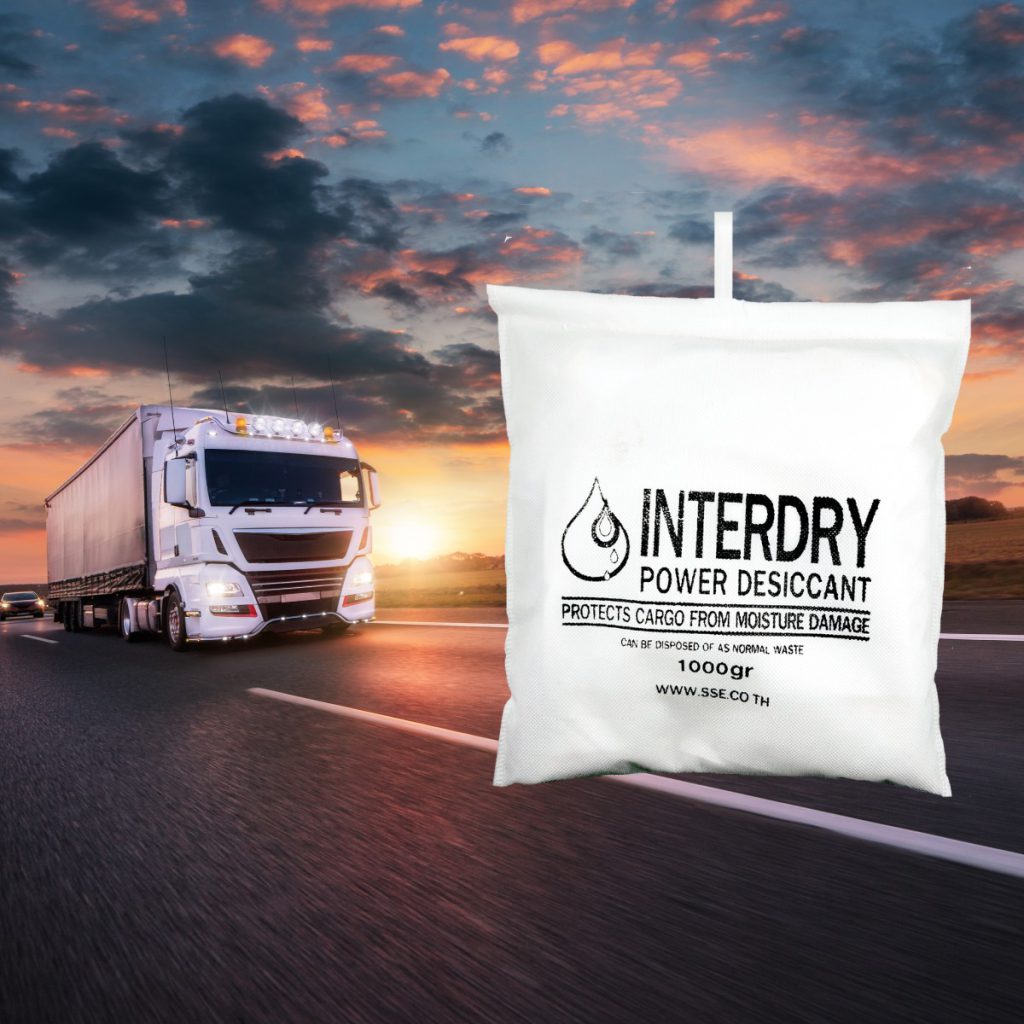The Use of Desiccants in the Automotive Industry

Table of Content
Introduction
Have you ever wondered why controlling moisture is so important in the automotive industry and why desiccants in the automotive industry are so important? Moisture can lead to a variety of issues, including rust, corrosion, and component failure. One effective way to combat these problems is by using desiccants, which are specially designed to absorb moisture and maintain a dry environment. In this article, we will discuss the importance of moisture control in the automotive industry, the types of desiccants commonly used, their key applications, and best practices for effective use.
Moisture-Related Issues in the Automotive Industry
Moisture can have a significant impact on the performance and longevity of vehicles and their components. Some common moisture-related issues include:
- Rust and corrosion: When exposed to moisture, metal parts can begin to rust and corrode, compromising their structural integrity and leading to potential failures. This is especially concerning in critical components such as the chassis, suspension, and braking systems.
- Electronic component failure: Modern vehicles rely heavily on electronics for various systems, including engine management, safety features, and infotainment. Excess moisture can cause short circuits, malfunctions, and other issues in these sensitive components.
- Mold and mildew growth: High humidity levels can create the perfect environment for mold and mildew to thrive. This not only leads to unpleasant odors but can also cause respiratory issues and allergies for drivers and passengers.
Some Commonly Used Types of Desiccants in the Automotive Industry
There are several types of commonly used desiccants in the automotive industry, each with its own unique properties and benefits:
- Silica gel: This widely used desiccant is made from silicon dioxide and can absorb up to 40% of its weight in moisture. It’s non-toxic, non-flammable, and chemically inert, making it ideal for a variety of applications.
- Clay desiccants: Made from natural materials like bentonite clay, these desiccants have excellent moisture-absorbing capabilities and are often used in automotive packaging and storage.
- Calcium chloride: This highly effective desiccant can absorb up to 200% of its weight in moisture and is commonly used in transportation protection and vehicle storage.
- Molecular sieves: These synthetically produced desiccants have a highly porous structure, allowing them to selectively adsorb specific types of molecules. They can be tailored to target specific moisture levels, making them suitable for more specialized applications.

Key Applications of Desiccants in the Automotive Industry
Car Storage and Vehicle Preservation
Whether it’s a classic car or a vehicle being stored for an extended period, desiccants play a crucial role in protecting against humidity and moisture damage. By maintaining a dry environment, desiccants can help prevent rust, corrosion, and mold growth, ensuring that the vehicle remains in top condition during storage.
Automotive Packaging
Sensitive automotive components, such as electronics and metal parts, need to be protected from moisture during transit and storage. Desiccants can be added to packaging materials to help ensure the safety of these components and prevent damage due to humidity.
Humidity Regulation in Vehicle Assembly and Manufacturing
Maintaining a controlled environment during vehicle assembly and manufacturing processes is essential for producing high-quality, reliable products. Desiccants can help regulate humidity levels in these environments, reducing the risk of defects caused by moisture-related issues.
Transportation Protection
Vehicles are often exposed to varying humidity levels during transportation, which can lead to rust, corrosion, and other moisture-related damage. By using desiccants in shipping containers and packaging materials, manufacturers can help protect vehicles from these issues during transit.
InterDry Desiccant in Automotive Shipping
Shipping vehicles in containers can expose them to fluctuating temperature and humidity levels, which can lead to corrosion and damage. InterDry Desiccant is specifically designed for shipping container use, offering custom designs that fit the unique needs of the automotive industry. By effectively absorbing moisture and maintaining an optimal environment, InterDry Desiccant protects vehicles during transportation and storage.
Moisture-Sensitive Component Protection
Certain automotive components, such as brake systems, fuel cells, and batteries, are particularly sensitive to moisture. Including desiccants in the design of these components can help protect them from humidity-related issues and extend their lifespan.
Cabin Air Filtration
Desiccants can also be used in cabin air filtration systems to help maintain a comfortable and healthy environment for drivers and passengers. By absorbing moisture from the air, desiccants can help reduce the risk of mold and mildew growth, as well as improve overall air quality inside the vehicle.
Passenger Car Cabin Air Quality
The quality of the cabin air in a passenger car is crucial for maintaining a comfortable and healthy environment for the occupants. Desiccants are used in various components of the car, such as electrical boxes and cooling modules, to ensure that moisture does not affect their performance. By controlling humidity levels, desiccants help to reduce the risk of mold, mildew, and unpleasant odors inside the vehicle.
Air Conditioning and Desiccants
Air conditioning plays a vital role in maintaining a comfortable temperature inside the passenger cabin. However, the process of cooling the air also results in increased humidity levels. This is where desiccants come into play. They help in regulating humidity levels by absorbing excess moisture, thereby improving the overall efficiency of the air conditioning system. The use of refrigerant and proper circulation in the system helps maintain optimal performance and comfort for passengers.
Moisture Prevention in Trunk
The trunk of a car is susceptible to moisture problems, which can lead to corrosion, unpleasant odors, and damage to stored items. To combat these issues, manufacturers use desiccants for moisture prevention. Desiccants such as silica gel and molecular sieves can absorb excess moisture and prevent water-related problems, keeping the trunk dry and free from damage.
Trunk Moisture Protection with Accumulator Bags
To further protect the trunk from moisture-related issues, manufacturers often use accumulator bags filled with desiccants. These bags can absorb fuel vapor, fragrance, and excess moisture, keeping the trunk dry and free from unpleasant odors.
Refrigerant Circulation and Desiccants
In an automotive air conditioning system, the refrigerant circulation is crucial for maintaining optimal performance. However, the presence of moisture in the system can lead to decomposition of the refrigerant, formation of acids, and degradation of the oil. Desiccants such as molecular sieves and silica gel can help absorb moisture, preventing these issues and ensuring the longevity of the air conditioning system.
Cooling Modules and Desiccants
Automotive cooling modules, such as condenser tube assemblies and air suspension systems, are critical for maintaining the vehicle’s temperature. Desiccants can help regulate moisture levels in these components, preventing corrosion and wear-and-tear, thus ensuring their efficient operation.
Electrical Boxes and Desiccants
Electrical components such as controllers and spark plug inserts in cars are sensitive to moisture. Desiccants are used in electrical boxes to protect these components from moisture-induced damage, ensuring optimal performance and longevity.
Vibration and Desiccants in Automobile Components
Vibration in vehicles can cause dust formation and wear-and-tear on automobile components. Desiccants can help mitigate the impact of vibration by absorbing moisture and reducing friction between parts, prolonging the life of critical components.
Best Practices for Using Desiccants in the Automotive Industry
To get the most out of your desiccants in automotive applications, consider the following best practices:
- Choose the right type of desiccant: As discussed earlier, different desiccants have unique properties and benefits. Select the appropriate desiccant for your specific application, taking into account factors such as moisture absorption capacity, temperature range, and compatibility with materials.
- Use the proper amount of desiccant: Ensure that you’re using enough desiccant to effectively control moisture levels in your application. This may require consulting guidelines or performing calculations based on the volume of the space, the desired humidity level, and the absorption capacity of the desiccant.
- Monitor and replace desiccants as needed: Over time, desiccants can become saturated with moisture and lose their effectiveness. Regularly check the condition of your desiccants and replace them as needed to ensure optimal moisture control.
- Store desiccants properly: When not in use, desiccants should be stored in airtight containers to prevent them from absorbing moisture prematurely. This will help maintain their effectiveness and extend their shelf life.
- Consider using moisture indicators: Moisture indicators, such as humidity cards, can be used alongside desiccants to help monitor humidity levels in packaging or storage environments. These indicators can provide a visual indication of when desiccants may need to be replaced.
Frequently Asked Questions
What is the purpose of using desiccants in the automotive industry?
Desiccants are used in the automotive industry to control moisture, prevent rust and corrosion, protect sensitive electronic components, and ensure the overall quality and longevity of vehicles and their parts.
Which desiccant is commonly used in the automotive industry?
Silica gel is the most commonly used desiccant in the automotive industry due to its high moisture-absorbing capacity, non-toxic nature, and reusability.
How do desiccants help in rust prevention?
Desiccants absorb moisture from the air, reducing humidity levels in enclosed spaces, such as car storage or shipping containers. This prevents the formation of rust and corrosion on metal surfaces.
What is the role of desiccants in car storage?
Desiccants help maintain an optimal humidity level in car storage facilities, preventing mold, mildew, rust, and damage to upholstery and other materials.
How do desiccants protect moisture-sensitive electronic components?
Desiccants control humidity levels in packaging and storage spaces, ensuring electronic components and systems are protected from moisture-induced damage, such as short circuits or corrosion.
Desiccants control humidity levels in packaging and storage spaces, ensuring electronic components and systems are protected from moisture-induced damage, such as short circuits or corrosion.
Cabin air filtration systems often use desiccants to remove moisture and contaminants from the air, ensuring a comfortable and healthy environment for passengers and reducing the risk of window fogging.
Are desiccants used during the transportation of vehicles?
Yes, desiccants such as calcium chloride based IPD Container Desiccant are commonly used during vehicle transportation to protect vehicles from moisture-related damage, especially when shipping overseas or through areas with high humidity.
Can desiccants be reused?
Some desiccants, such as silica gel, can be reused by drying them out or “recharging” them through a heating process that removes the absorbed moisture.
What is the use of desiccant in a car?
Desiccants in cars are used to control moisture and humidity levels in various components and spaces, such as the air conditioning system, electrical boxes, trunk, and passenger cabin. This helps prevent corrosion, mold, and mildew growth, and ensures the efficient operation of vehicle systems.
What are synthetic desiccants?
Synthetic desiccants are man-made materials designed to absorb moisture effectively. They are commonly used in various industries, including automotive, for their superior moisture-absorbing properties. Examples of synthetic desiccants include silica gel, molecular sieves, and activated alumina.
How do you absorb moisture in a car?
Moisture in a car can be absorbed using desiccants such as silica gel, molecular sieves, or activated charcoal. These materials can be placed in moisture-absorbing bags, containers, or even in the form of car dehumidifiers, which can be strategically placed in areas prone to moisture buildup, such as the trunk, under the seats, or near the windshield.
Are moisture absorbers good for cars?
Yes, moisture absorbers are beneficial for cars as they help regulate humidity levels, prevent mold and mildew growth, reduce condensation, and protect sensitive components from moisture-induced damage.
Do moisture absorbers work in cars?
Yes, moisture absorbers are effective in cars when used correctly. They can absorb excess moisture, maintain optimal humidity levels, and prevent issues such as fogging windows, musty odors, and damage to sensitive components.
What is the best way to stop condensation in a car?
The best way to stop condensation in a car is by using moisture absorbers such as desiccants, ensuring proper air circulation, and maintaining a clean and dry interior. Regularly cleaning windows, using air conditioning or ventilation, and removing any wet items can also help prevent condensation.
How can condensation be reduced in cars?
Condensation in cars can be reduced by using moisture absorbers such as desiccants, maintaining proper ventilation and air circulation, keeping the interior clean and dry, and promptly addressing any moisture-related issues such as leaks or wet items inside the vehicle.
Conclusion
The use of desiccants in the automotive industry is essential for protecting vehicles and their components from moisture-related damage. By understanding the different types of desiccants, their key applications, and best practices for their use, manufacturers can effectively manage moisture and ensure the longevity and reliability of their products. With proper implementation, desiccants can help maintain the quality and performance of vehicles, ultimately benefiting both manufacturers and consumers alike.
https://sse.co.th/product-category/container-desiccant/
https://sse.co.th/product-category/silica-gel/
ขอบคุณที่ใช้เวลาอ่านบทความของเราเกี่ยวกับการป้องกันความชื้น ทางเราหวังว่าท่านจะได้รับข้อมูลที่มีคุณค่าและเป็นประโยชน์ ทางเรายินดีให้บริการการปรึกษาฟรีเพื่อพูดคุยเกี่ยวกับความต้องการของท่านและให้คำแนะนำเกี่ยวกับวิธีการป้องกันความชื้นที่กำหนดเฉพาะสำหรับคุณ โปรดติดต่อเราที่ 0858124188 เพื่อนัดหมายการปรึกษาหรือเยี่ยมชมร้านค้าของเราเพื่อค้นหาผลิตภัณฑ์ที่ช่วยป้องกันสินค้าของคุณจากความเสียหายจากความชื้น ทางเราหวังว่าจะได้รับข่าวสารจากท่านเร็วๆนี้

